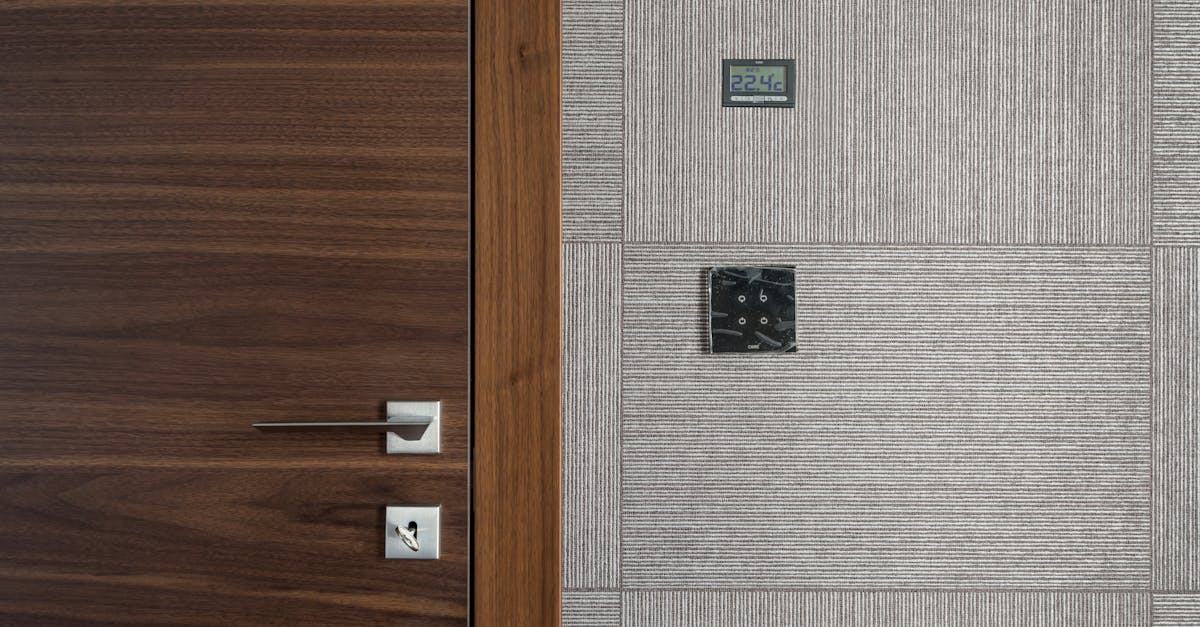In a world where your coffee maker can brew a perfect cup while you’re still snoozing, home automation seems like a dream come true. But hold on! With great power comes great responsibility—and a few security risks that might make you rethink that smart toaster. Imagine waking up to a rogue robot vacuum that’s taken over your living room or worse, a hacker who knows your every move.
Home automation can turn your house into a high-tech fortress, but it can also open the door to vulnerabilities. From unsecured Wi-Fi networks to easily guessable passwords, the very gadgets designed to make life easier might just be your home’s Achilles’ heel. So before you let your smart home run the show, it’s time to dive into the risks lurking behind those shiny screens.
Table of Contents
ToggleOverview of Home Automation Security Risks
Home automation introduces significant security risks that users should consider. Hacking represents a major threat to smart devices. Cybercriminals exploit vulnerabilities in systems, gaining unauthorized access to personal data and privacy.
Weak passwords create easy entry points for hackers. Many users favor convenience, often choosing simple passwords that are easy to guess. Public Wi-Fi networks increase susceptibility, offering additional targets for attackers seeking to intercept data.
Insecure devices also contribute to security challenges. Products lacking proper encryption enable interception of communication between devices and users. Furthermore, manufacturers sometimes neglect timely software updates, leaving devices vulnerable to emerging threats.
Denial of Service (DoS) attacks present another risk for home automation systems. Attackers can overwhelm networks, rendering smart devices inoperable and disrupting everyday activities.
Privacy concerns should also factor into the security risk assessment. Cameras and voice-activated assistants often collect sensitive data, which can be accessed without user consent if not properly protected. Data breaches may occur during storage and transmission if measures are insufficient.
User awareness plays a crucial role in mitigating these risks. Educating oneself about potential vulnerabilities and adopting best security practices can significantly enhance protection. Regularly updating passwords, choosing strong authentication methods, and monitoring device activity consistently contribute to a safer smart home experience.
These factors illustrate that while home automation offers convenience, it also necessitates careful consideration of associated security risks.
Common Vulnerabilities in Smart Homes
Smart homes present several vulnerabilities that can jeopardize user security. Identifying and mitigating these weaknesses is essential for safe automation.
Insecure Devices
Insecure devices represent a significant threat to smart home security. Many products lack proper encryption, exposing them to unauthorized access. Vulnerabilities often stem from poor design or oversight by manufacturers. When devices connect to the internet, they create potential entry points for cybercriminals. Smart cameras and door locks frequently showcase security flaws, making them targets for hackers. Certain manufacturers also delay firmware updates, leaving devices susceptible for extended periods. Ultimately, ensuring that devices are secure is crucial for protecting personal data.
Weak Passwords and Authentication
Weak passwords and authentication methods enable unauthorized access to smart home systems. Many users opt for easy-to-remember passwords, compromising security. Simple and common passwords can make it effortless for adversaries to breach accounts. Multi-factor authentication remains an underutilized measure that adds an additional security layer. Using unique passwords for each smart device significantly minimizes risk. Frequent password updates enhance vulnerabilities even further. Awareness of best practices can help users strengthen their home automation defenses.
Types of Threats to Home Automation Systems
Home automation systems face various threats that can compromise security and privacy. Understanding specific risks helps in implementing effective countermeasures.
Hacking and Unauthorized Access
Cybercriminals constantly seek ways to penetrate smart home networks. Weak passwords serve as an open door for unauthorized access. Attackers exploit system vulnerabilities to gain control over devices, potentially leading to data theft or device malfunction. Using public Wi-Fi networks boosts exposure to these threats. Encryption plays a crucial role in safeguarding communication between devices, and its absence often creates opportunities for intruders. Employing strong, unique passwords drastically reduces the likelihood of successful hacking attempts. Moreover, regularly updating software can close security gaps, further protecting home automation systems.
Data Breaches and Privacy Concerns
Privacy remains a top concern with smart devices in households. Cameras and voice assistants collect vast amounts of personal data, risking exposure if not adequately secured. Data breaches can lead to unauthorized access to sensitive information, significantly affecting users’ privacy. Manufacturers sometimes overlook timely software updates, allowing vulnerabilities to persist. Users often fail to adjust privacy settings, increasing the chance of data leaks. Implementing robust data protection measures, such as encryption and secure access controls, enhances privacy. Regularly monitoring data usage and device activity can also help identify unusual patterns, serving as an early warning for potential issues.
Mitigation Strategies for Home Automation Security
Mitigating home automation security risks requires proactive measures and best practices. Implementing these strategies helps ensure the safety of smart devices and personal data.
Best Practices for Device Security
Prioritizing strong password management stands at the forefront of securing smart devices. Unique passwords for each device minimize the risk of unauthorized access. Enabling multi-factor authentication adds an extra layer of protection. Regular monitoring of device activity assists in detecting any suspicious behavior. Using secured Wi-Fi networks instead of public ones significantly reduces exposure to potential attacks. Adopting robust encryption protocols for communication among devices prevents eavesdropping and data interception. Educating all household members about safe usage practices fosters a secure environment.
Importance of Regular Software Updates
Regular software updates play a crucial role in home automation security. Updates often contain patches that address known vulnerabilities and enhance device performance. Failing to apply updates leaves devices vulnerable to exploitation by hackers. Device manufacturers frequently release firmware updates to close security gaps and improve functionality. Staying informed about available updates ensures devices operate with the latest security features. Scheduling automatic updates simplifies the process and reduces the risk of human error. Prioritizing timely installation of updates contributes to safeguarding personal data and maintaining a secure smart home environment.
Embracing home automation can enhance daily living but it’s essential to remain vigilant about security risks. The convenience of smart devices comes with potential vulnerabilities that can jeopardize personal data. By understanding these risks and implementing strong security measures, users can enjoy the benefits of smart technology while minimizing exposure to threats.
Regularly updating passwords using unique combinations for each device and enabling multi-factor authentication are crucial steps. Additionally, staying informed about software updates and employing robust encryption will further protect against unauthorized access. Prioritizing security not only safeguards personal information but also ensures a seamless and secure smart home experience.





